Abstract
Several of the parameters related to the efficacy of passive protection against Nippostrongylus brasiliensis were studied in female hybrid (PVG/c x DA)F1 and outbred Wistar rats. The time after infection at which immune serum was given did, to some extent, alter the degree of protection conferred. There was substantial protection 8 days after challenge in rats given hyperimmune serum (HIS) either as daily injections 4-7 days post-infection or as a single dose on day 4. Eight separate experiments in which HIS was injected 4 days after challenge with 1000 l3 resulted in expulsion of 96 +/- 2% of the worm burdens by day 8. In a further six experiments, following infection with 2000 l3 and using the same protocol, 85 +/- 3% of the worm burden was expelled by day 8. A lag of 2 days between serum transfer and commencement of worm expulsion was consistently observed and, within the space of a further 2-4 days, more than 95% of the parasites were expelled. Transplanted 'normal' and 'damaged' adult worms were also susceptible to the passive transfer of HIS. Sera recovered from rats immunized with two or three challenges (hyperimmune sera) were more protective than sera from rats given one challenge. Serum from rats challenged for the first time 6 days previously conferred significant protection against a 1000 l3 infection and sera recovered 8 and 10-12 days post-infection with 4000 l3 protected recipients with increasing effectiveness. Thoracic duct lymph collected on the tenth day of infection with 4000 l3 was also protective. The response to both primary infection and hyperimmune serum was dose-dependent. The consistently good protection achieved in the present study when compared with the variable success of previous experiments (reviewed by Ogilvie & Jones, 1971) may be a function of the strain and sex of the rats used, together with modifications of the immunization protocols. The relevance of these findings to mucosal defences against N. brasiliensis is discussed.
Full text
PDF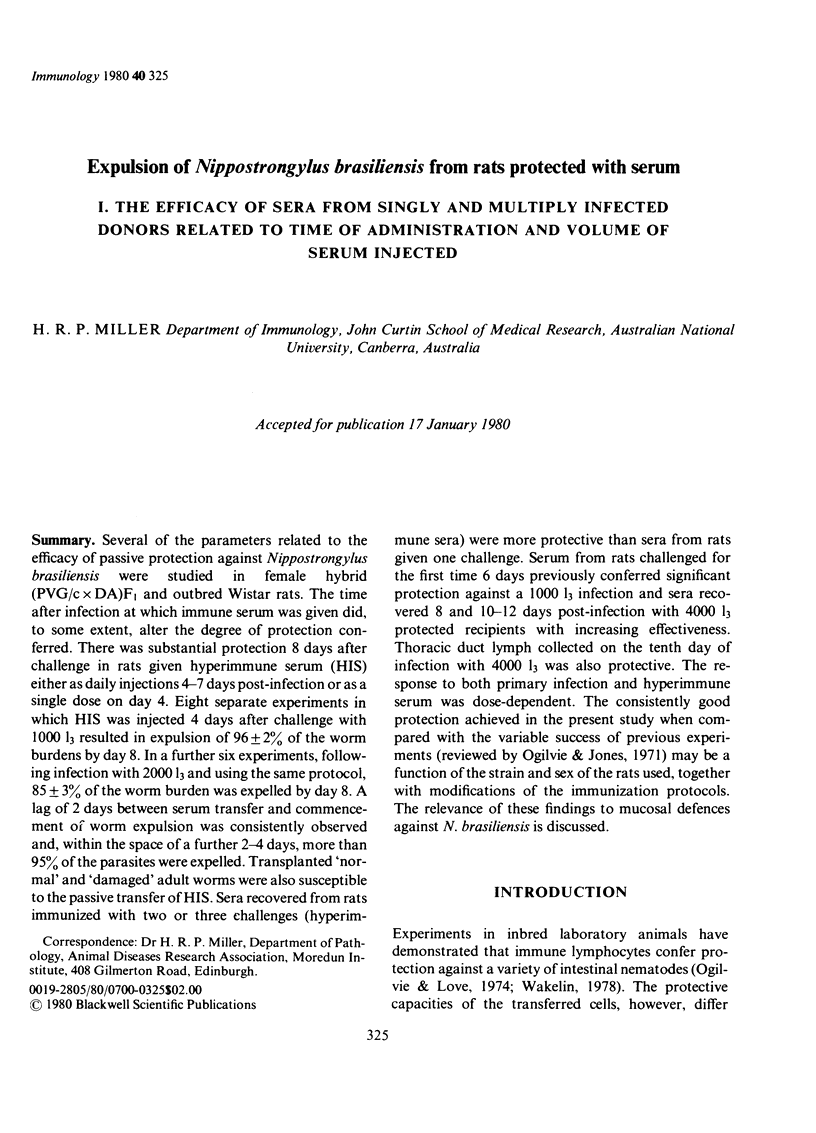
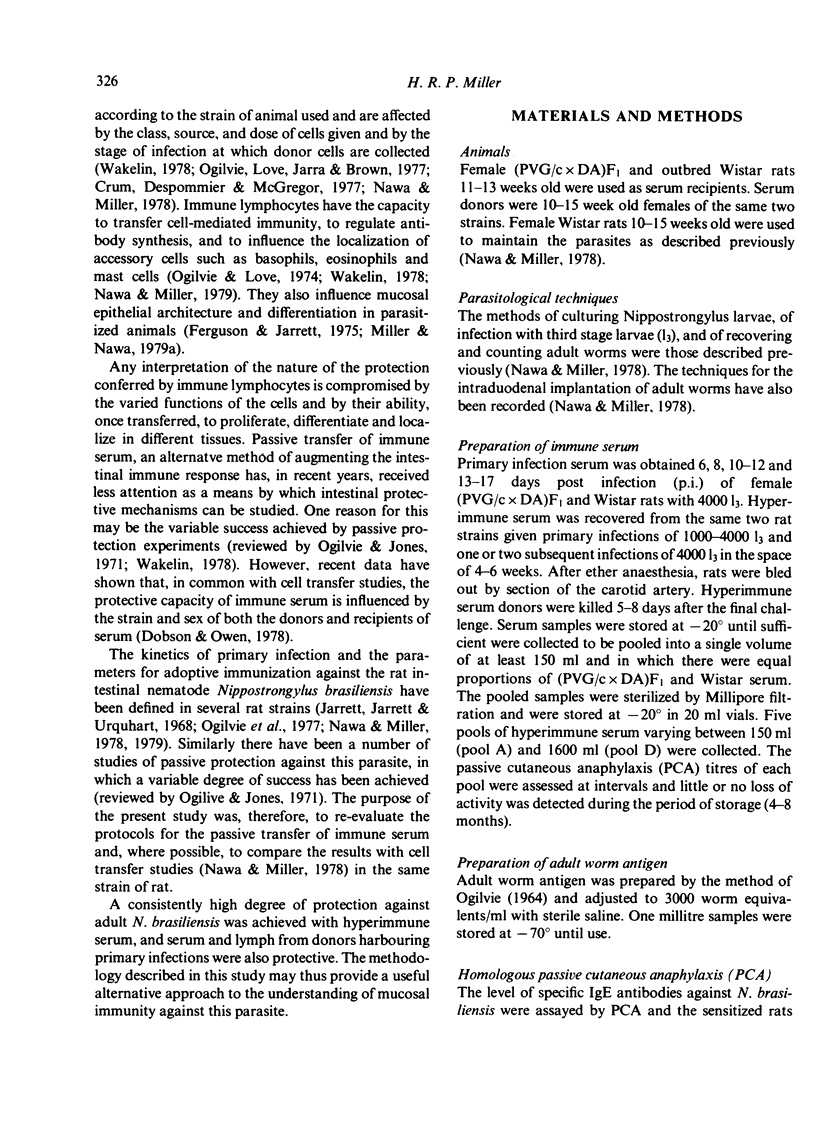
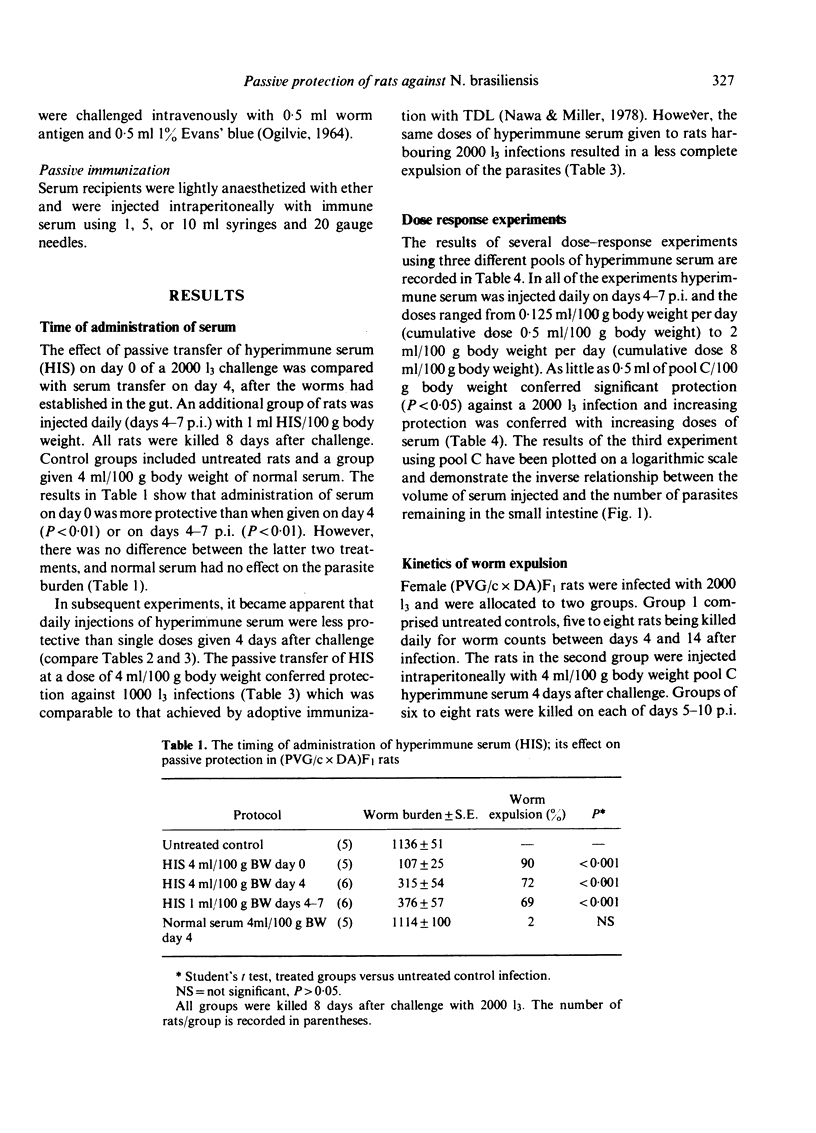
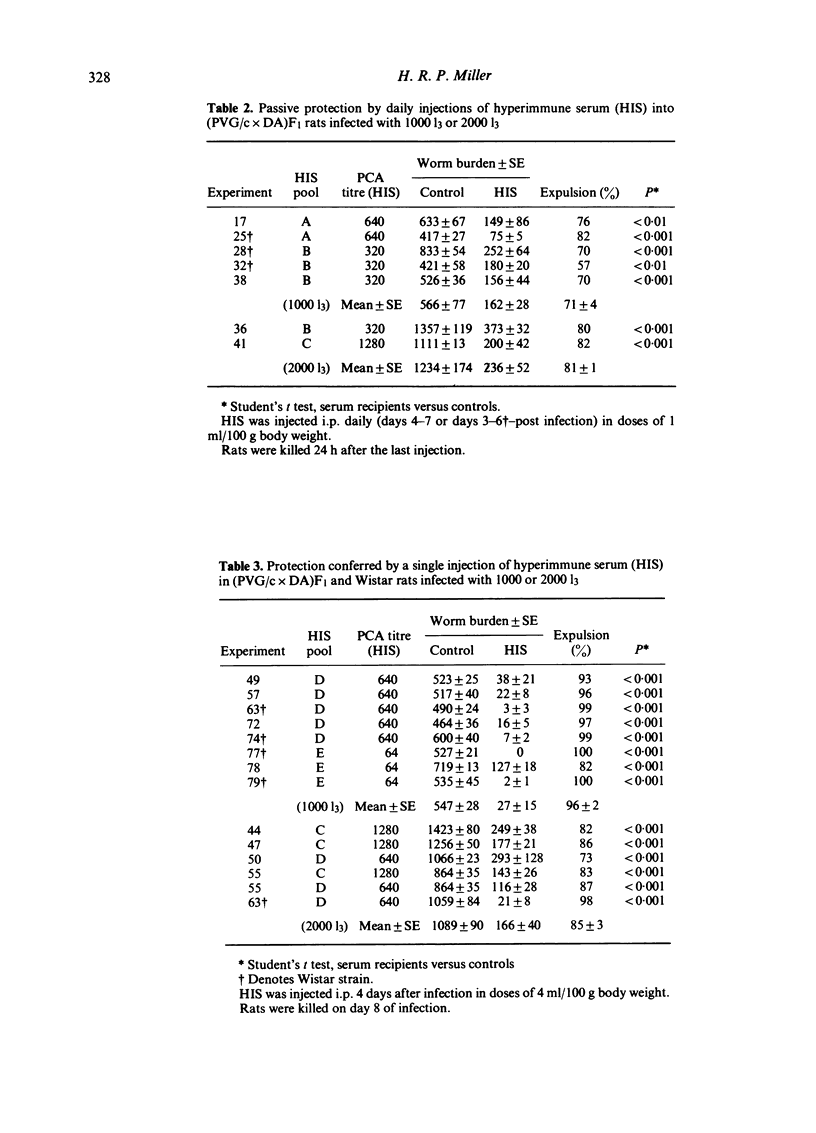
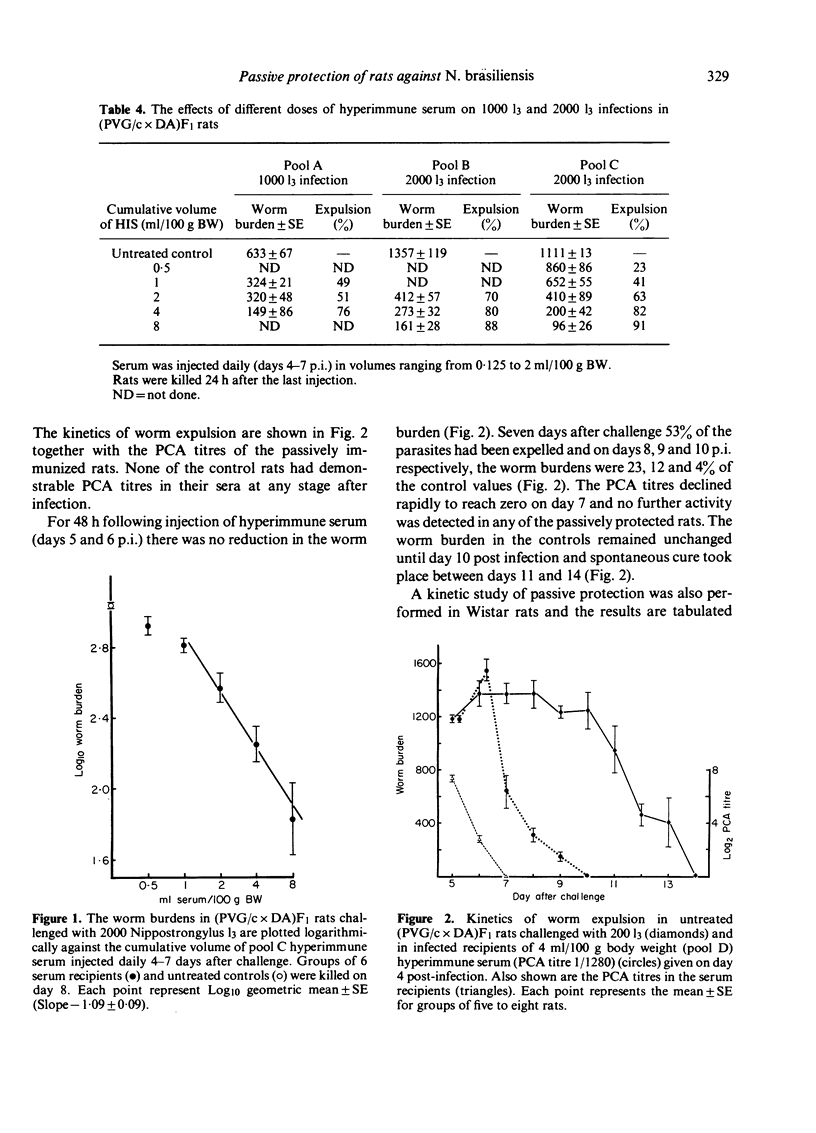
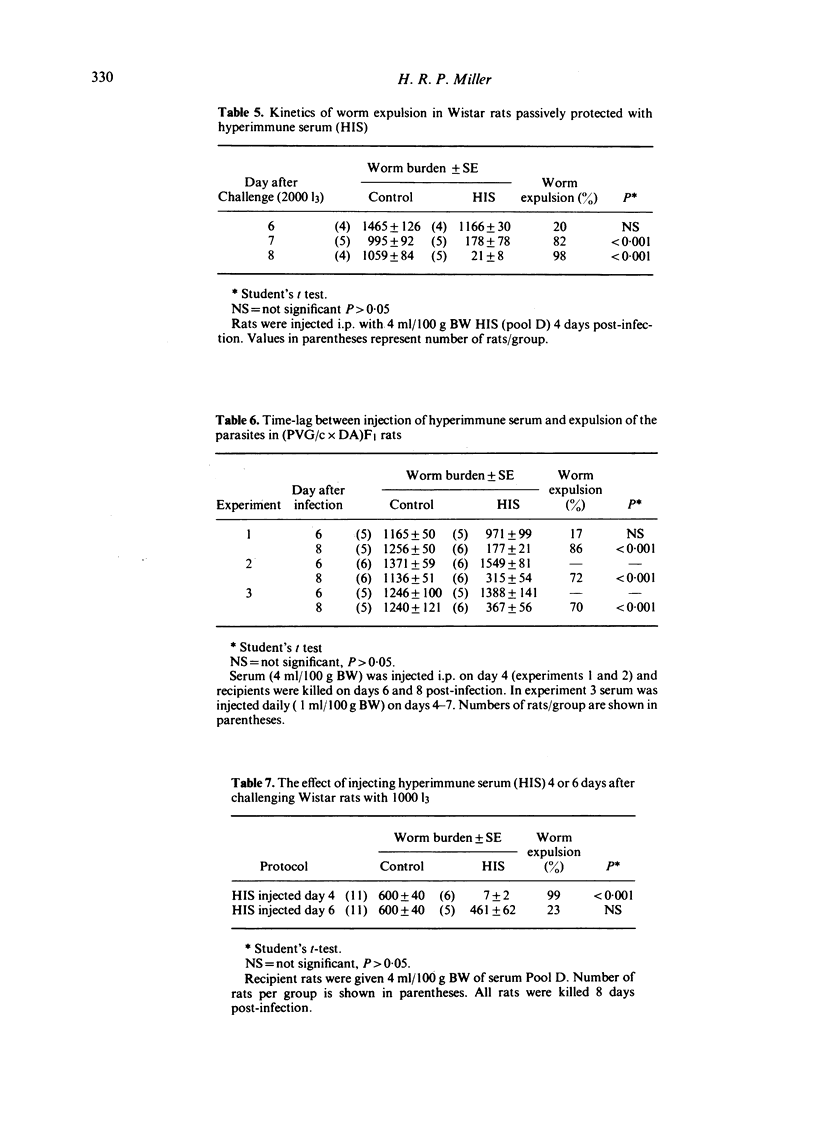
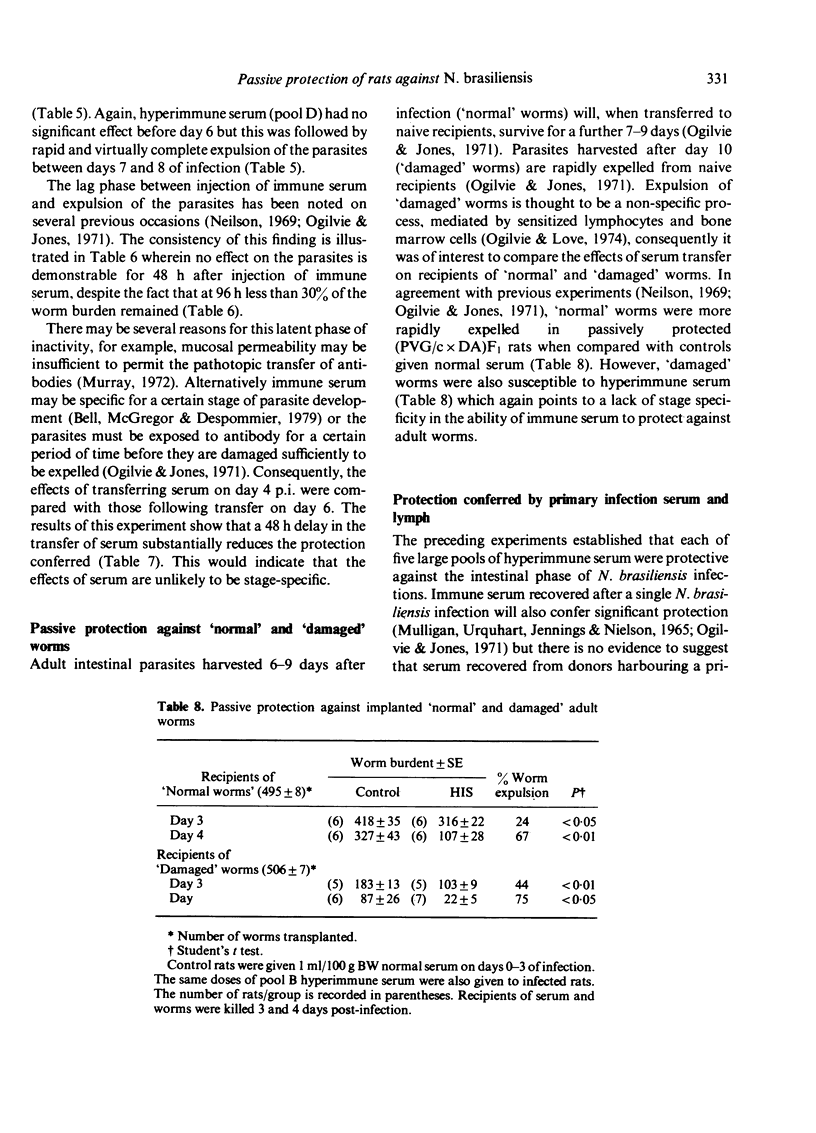
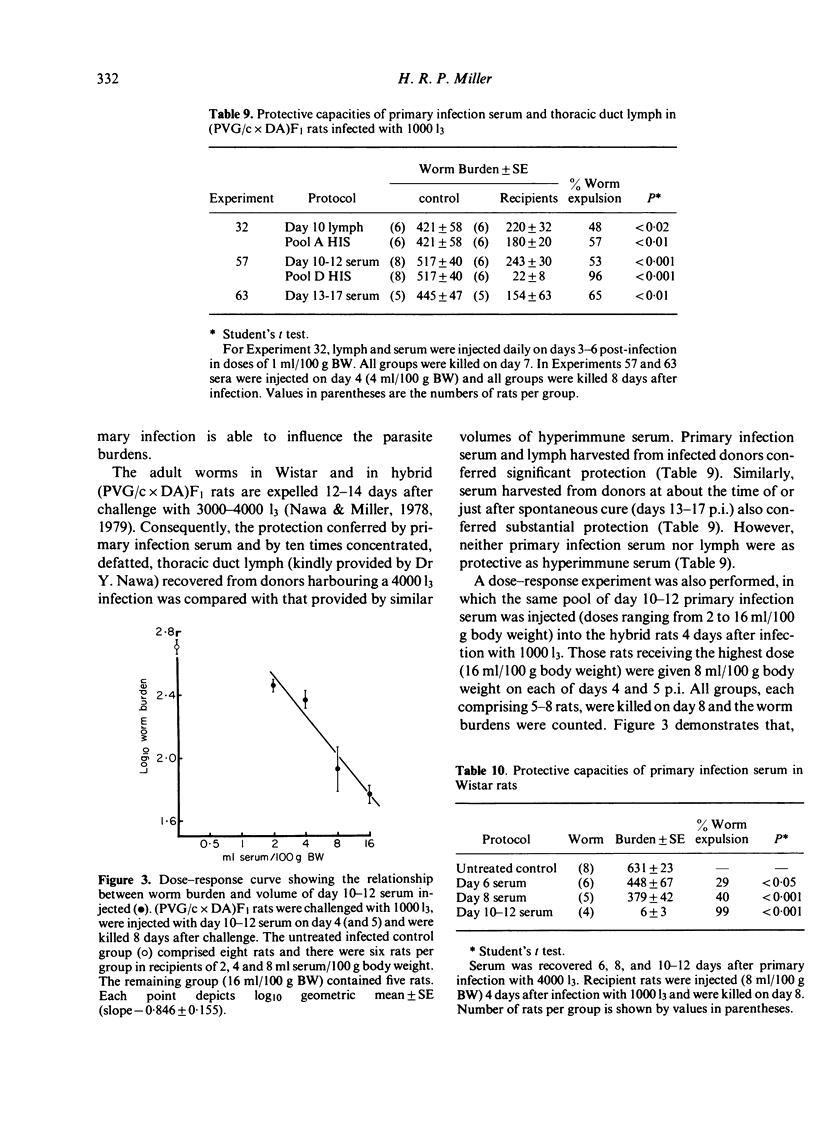
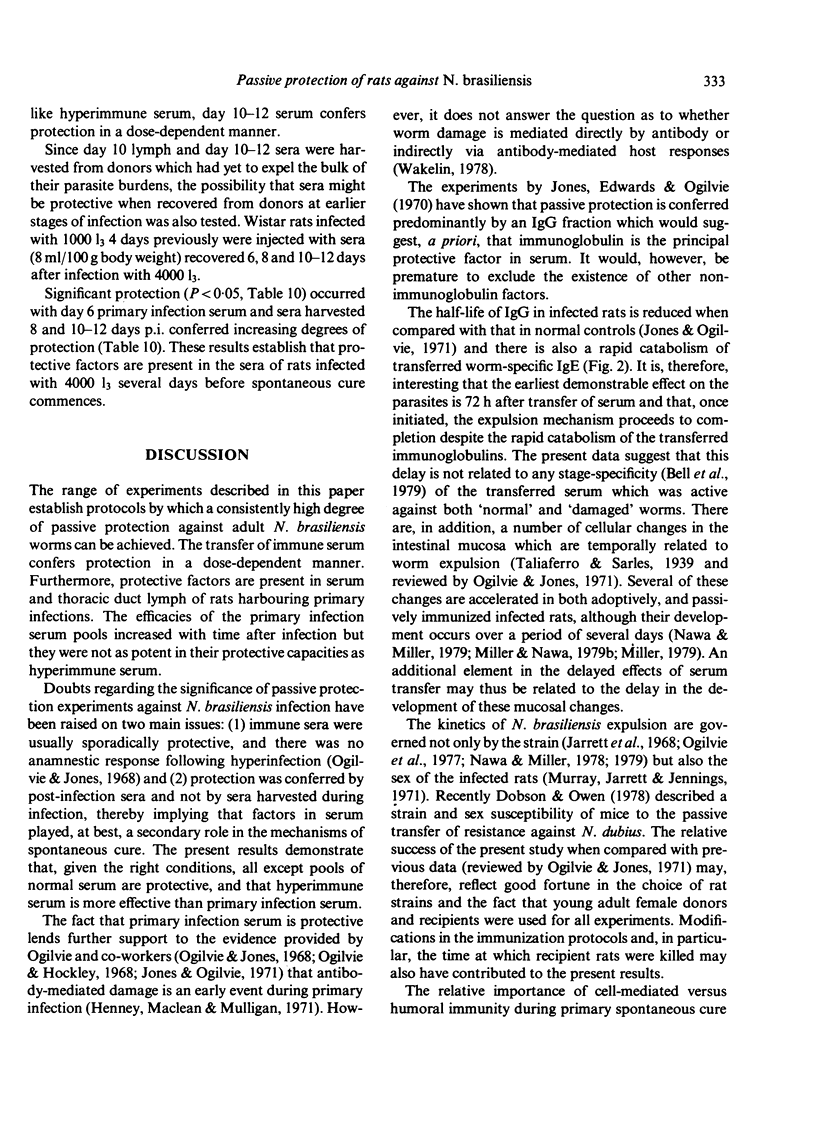
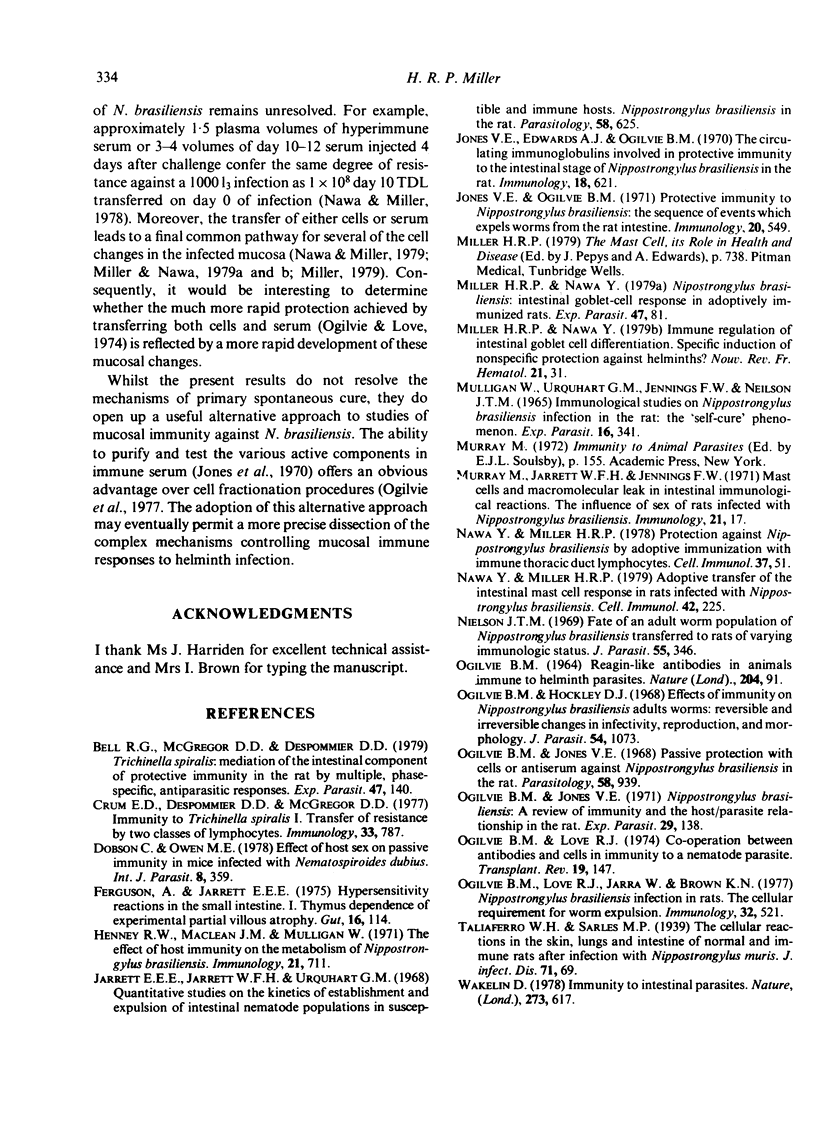
Selected References
These references are in PubMed. This may not be the complete list of references from this article.
- Bell R. G., McGregor D. D., Despommier D. D. Trichinella spiralis: mediation of the intestinal component of protective immunity in the rat by multiple, phase-specific, antiparasitic responses. Exp Parasitol. 1979 Apr;47(2):140–157. doi: 10.1016/0014-4894(79)90068-7. [DOI] [PubMed] [Google Scholar]
- Crum E. D., Despommier D. D., McGregor D. D. Immunity to Trichinella spiralis. I. Transfer of resistance by two classes of lymphocytes. Immunology. 1977 Dec;33(6):787–795. [PMC free article] [PubMed] [Google Scholar]
- Dobson C., Owen M. E. Effect of host sex on passive immunity in mice infected with Nematospiroides dubius. Int J Parasitol. 1978 Oct;8(5):359–364. doi: 10.1016/0020-7519(78)90033-4. [DOI] [PubMed] [Google Scholar]
- Ferguson A., Jarrett E. E. Hypersensitivity reactions in small intestine. I Thymus dependence of experimental 'partial villous atrophy'. Gut. 1975 Feb;16(2):114–117. doi: 10.1136/gut.16.2.114. [DOI] [PMC free article] [PubMed] [Google Scholar]
- Henney R. W., MacLean J. M., Mulligan W. The effect of host immunity on the metabolism of Nippostrongylus brasiliensis. Immunology. 1971 Oct;21(4):711–718. [PMC free article] [PubMed] [Google Scholar]
- Jarrett E. E., Jarrett W. F., Urquhart G. M. Quantitative studies on the kinetics of establishment and expulsion of intestinal nematode populations in susceptible and immune hosts. Nippostrongylus brasiliensis in the rat. Parasitology. 1968 Aug;58(3):625–639. doi: 10.1017/s0031182000028924. [DOI] [PubMed] [Google Scholar]
- Jones V. E., Edwards A. J., Ogilvie B. M. The circulating immunoglobulins involved in protective immunity to the intestinal stage of Nippostrongylus brasiliensis in the rat. Immunology. 1970 May;18(5):621–633. [PMC free article] [PubMed] [Google Scholar]
- Jones V. E., Ogilvie B. M. Protective immunity to Nippostrongylus brasiliensis: the sequence of events which expels worms from the rat intestine. Immunology. 1971 Apr;20(4):549–561. [PMC free article] [PubMed] [Google Scholar]
- MULLIGAN W., URQUHART G. M., JENNINGS F. W., NEILSON J. T. IMMUNOLOGICAL STUDIES ON NIPPOSTRONGYLUS BRASILIENSIS INFECTION IN THE RAT: "SELF-CURE" PHENOMENON. Exp Parasitol. 1965 Jun;16:341–347. doi: 10.1016/0014-4894(65)90056-1. [DOI] [PubMed] [Google Scholar]
- Miller H. R., Nawa Y. Immune regulation of intestinal goblet cell differentiation. Specific induction of nonspecific protection against helminths? Nouv Rev Fr Hematol. 1979;21(1):31–45. [PubMed] [Google Scholar]
- Miller H. R., Nawa Y. Nippostrongylus brasiliensis: intestinal goblet-cell response in adoptively immunized rats. Exp Parasitol. 1979 Feb;47(1):81–90. doi: 10.1016/0014-4894(79)90010-9. [DOI] [PubMed] [Google Scholar]
- Nawa Y., Miller H. R. Adoptive transfer of the intestinal mast cell response in rats infected with Nippostrongylus brasiliensis. Cell Immunol. 1979 Feb;42(2):225–239. doi: 10.1016/0008-8749(79)90188-6. [DOI] [PubMed] [Google Scholar]
- Nawa Y., Miller H. R. Protection against Nippostrongylus brasiliensis by adoptive immunization with immune thoracic duct lymphocytes. Cell Immunol. 1978 Apr;37(1):51–60. doi: 10.1016/0008-8749(78)90173-9. [DOI] [PubMed] [Google Scholar]
- Neilson J. T. Fate of an adult worm population of Nippostrongylus brasiliensis transferred to rats of varying immunologic status. J Parasitol. 1969 Apr;55(2):346–348. [PubMed] [Google Scholar]
- Ogilvie B. M., Hockley D. J. Effects of immunity of Nippostrongylus brasiliensis adult worms: reversible and irreversible changes in infectivity, reproduction, and morphology. J Parasitol. 1968 Dec;54(6):1073–1084. [PubMed] [Google Scholar]
- Ogilvie B. M., Jones V. E. Parasitological review. Nippostrongylus brasiliensis: a review of immunity and host-parasite relationship in the rat. Exp Parasitol. 1971 Feb;29(1):138–177. doi: 10.1016/0014-4894(71)90021-x. [DOI] [PubMed] [Google Scholar]
- Ogilvie B. M., Jones V. E. Passive protection with cells or antiserum against Nippostronglylus brasiliensis in the rat. Parasitology. 1968 Nov;58(4):939–949. doi: 10.1017/s0031182000069705. [DOI] [PubMed] [Google Scholar]
- Ogilvie B. M., Love R. J. Co-operation between antibodies and cells in immunity to a nematode parasite. Transplant Rev. 1974;19(0):147–169. doi: 10.1111/j.1600-065x.1974.tb00131.x. [DOI] [PubMed] [Google Scholar]
- Ogilvie B. M., Love R. J., Jarra W., Brown K. N. Nippostrongylus brasiliensis infection in rats. The cellular requirement for worm expulsion. Immunology. 1977 Apr;32(4):521–528. [PMC free article] [PubMed] [Google Scholar]
- Wakelin D. Immunity to intestinal parasites. Nature. 1978 Jun 22;273(5664):617–620. doi: 10.1038/273617a0. [DOI] [PubMed] [Google Scholar]


